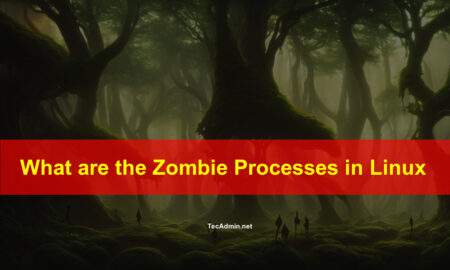The Linux Command Line Interface (CLI) is a text-based interface for interacting with the operating system. Users can enter commands, which the system then interprets and carries out to the kernel. It allows the user to navigate the file system, manage files, and perform various other tasks. The command line interface is a powerful tool for advanced users and is often used for tasks such as automation, scripting, and system administration.
Most of the Linux servers provide CLI only for interacting with the system, which is also the preferred way for system administrators. Many desktop users also love to use the command line interfaces to quickly perform jobs.
This article will cover the basics of using the Linux command line, including navigation, file management, and common commands.
Advantages of Linux Command Line
There are several advantages to using the Linux command line:
- Efficiency: The command line allows users to quickly and easily perform tasks by typing commands, rather than navigating through graphical menus.
- Automation: The command line allows users to create scripts and automate repetitive tasks, making it easier to perform complex operations.
- Power: The command line gives users access to a wide range of powerful tools and utilities that are not available through a graphical interface.
- Remote Access: The command line allows users to remotely access and control other systems over a network, making it a valuable tool for system administrators and network engineers.
- Customization: The command line allows users to customize and configure their system to their liking by editing configuration files and system settings.
- Lightweight: The command line interface does not require many resources, allowing it to run on older, less powerful systems.
- Free and open-source: The majority of Linux command line tools are free and open-source, making them accessible to anyone.
Begining with Linux Command Line
If you are new to the Linux command line interface, this tutorial will help you to start working on it.
- Launch Terminal
The Linux server user’s directly logged in to the command line interface.
To access the CLI of the remote systems, you can use an SSH client to connect it. Just make sure that the SSH server is running on the remote and that the port is open for the client system.
The desktop users press “CTRL + T” or search terminal under applications.
- File System Navigation
First, let’s discuss how to navigate the file system using the command line. The command line interface uses a hierarchical file system, with the root directory represented by a forward slash (/). To navigate to a specific directory, you can use the “cd” command followed by the directory path.
Here is a few basic examples of file system navigation:
Command Details cd ~Switch to the home directory. cd ..Switch one directory up cd ../../..Switch 3 directory up cd /var/wwwSwitch to /var/www directory. cd ../backupSwitch to “backup” directory available in parent directory . - Listing Files and Directories
Once you have navigated to a specific directory, you can use the “ls” command to list the contents of that directory. This command will show you all files and subdirectories within the current directory. You can also use the “-l” option to view the contents in a long format, which includes additional information such as file permissions and timestamps.
Command Details lslist files in the current directory. ls -lShow long listing of files in the current directory. ls -laInclude hidden files in a directory listing. ls -l /var/wwwList files available in /var/www directory. - Create and Manage Files
File management is another important aspect of using the Linux command line. Here:
- Create New File: The “touch” command can be used to create a new empty file.
touch file_name - Copy File: The “cp” command is used to copy files
copy file_name new_file - Move or Rename File: the “mv” command is used to move or rename files
touch file_name /opt/new_file - Delete a File: Use the “rm” command is used to delete files
rm file_namee
To copy or move multiple files at once, you can use the wildcard character (*) to specify a group of files.
- Create New File: The “touch” command can be used to create a new empty file.
- View Running Processes
In addition to file management, the Linux command line also provides a number of useful commands for managing processes and system information. The “top” command displays real-time information about the processes running on your system, including CPU and memory usage. The “ps” command displays information about the processes running on your system, including their process IDs.
- Serchig Pattern in Files
Another useful command is “grep”, which searches for a specified pattern in a file or a group of files. This command can be used in combination with other commands to filter and manipulate the output.
- Getting Helps for Commands
One of the most important commands is “man”, which provides manual pages for most Linux commands. This command can be used to view detailed information about a specific command, including its options and usage examples.
Conclusion
In conclusion, the Linux command line is a powerful tool that provides a wide range of capabilities for interacting with the operating system and performing various tasks. By learning the basics of navigation, file management, and common commands, you can greatly improve your efficiency and productivity when working with Linux.



